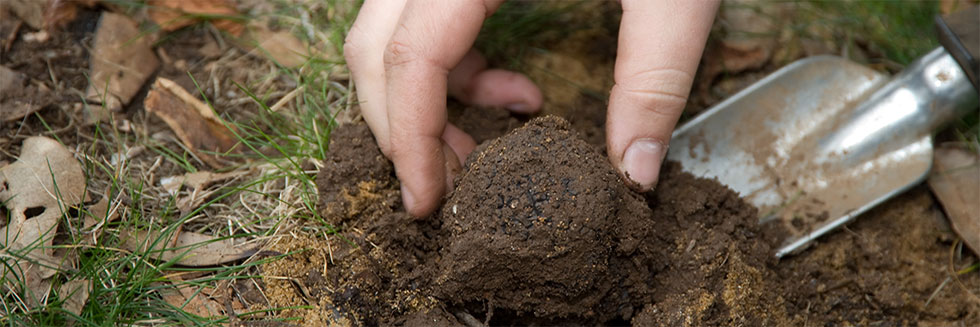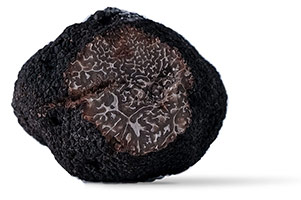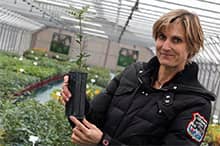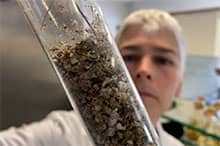


 Truffles are the fruiting bodies of mushrooms living in symbiosis with the feeder roots of trees. While there are some 5,000 species of truffle-producing mushrooms, only 70 of them produce edible truffles. Traditionally, truffles were harvested from forests, but several species of truffles can now be cultivated. Seedlings from a host tree (oak, pine, hazelnut...) are inoculated with truffle spores in a specialized nursery before being planted in the field. Production and harvesting of truffles begins five to seven years later.
Truffles are the fruiting bodies of mushrooms living in symbiosis with the feeder roots of trees. While there are some 5,000 species of truffle-producing mushrooms, only 70 of them produce edible truffles. Traditionally, truffles were harvested from forests, but several species of truffles can now be cultivated. Seedlings from a host tree (oak, pine, hazelnut...) are inoculated with truffle spores in a specialized nursery before being planted in the field. Production and harvesting of truffles begins five to seven years later.
The Tuber genus produces the most prized truffles in Europe, including the famous Italian white truffle (Tuber magnatum), whose price is the highest and whose cultivation is now possible thanks to ROBIN's mycorrhized plants. Mycorrhization also allows the production of black truffles (Tuber melanosporum), the development of Burgundy truffles (Tuber uncinatum) and the farming of summer truffles (Tuber aestivum).
 In truffle growing, just like in tree cultivation or in pickling, the recipe for success includes many ingredients (soil quality, climate, exposure...). Therefore, when starting a truffle growing project, it is better to be aware of this and to know the essential prerequisites for any new truffle orchard plantation. Once these first success factors are met, the time comes to plant the truffle plants, their maintenance, their protection... Here again, it is best to follow the advice of professional truffle growers and/or a practical guide listing the crucial stages in the life of a truffle orchard. Finally, when the time comes to boost and improve the yield of your plantations, think about reseeding truffle plots, which consists in (re)energizing the mycelial life around the truffle plants by adding inoculum.
In truffle growing, just like in tree cultivation or in pickling, the recipe for success includes many ingredients (soil quality, climate, exposure...). Therefore, when starting a truffle growing project, it is better to be aware of this and to know the essential prerequisites for any new truffle orchard plantation. Once these first success factors are met, the time comes to plant the truffle plants, their maintenance, their protection... Here again, it is best to follow the advice of professional truffle growers and/or a practical guide listing the crucial stages in the life of a truffle orchard. Finally, when the time comes to boost and improve the yield of your plantations, think about reseeding truffle plots, which consists in (re)energizing the mycelial life around the truffle plants by adding inoculum.
 Although truffles have been consumed and written about for centuries, it is only since the end of the 1960s that systematic research has been undertaken on the conditions necessary for the cultivation of truffles in cultivated orchards. Robin Nurseries actively participated in this research effort as early as 1960 by setting up its own mycorrhization laboratory !
Although truffles have been consumed and written about for centuries, it is only since the end of the 1960s that systematic research has been undertaken on the conditions necessary for the cultivation of truffles in cultivated orchards. Robin Nurseries actively participated in this research effort as early as 1960 by setting up its own mycorrhization laboratory !
It is indeed thanks to the process of mycorrhization that it is now possible to cultivate truffles from forest plants (oaks, hazel trees, cedars, pines or even lime trees). This technique consists in making the roots of a plant (generally a tree) cohabit with strains of mushrooms previously selected. The result is a clear improvement in the recovery and growth performance of young plants used in truffle fields.